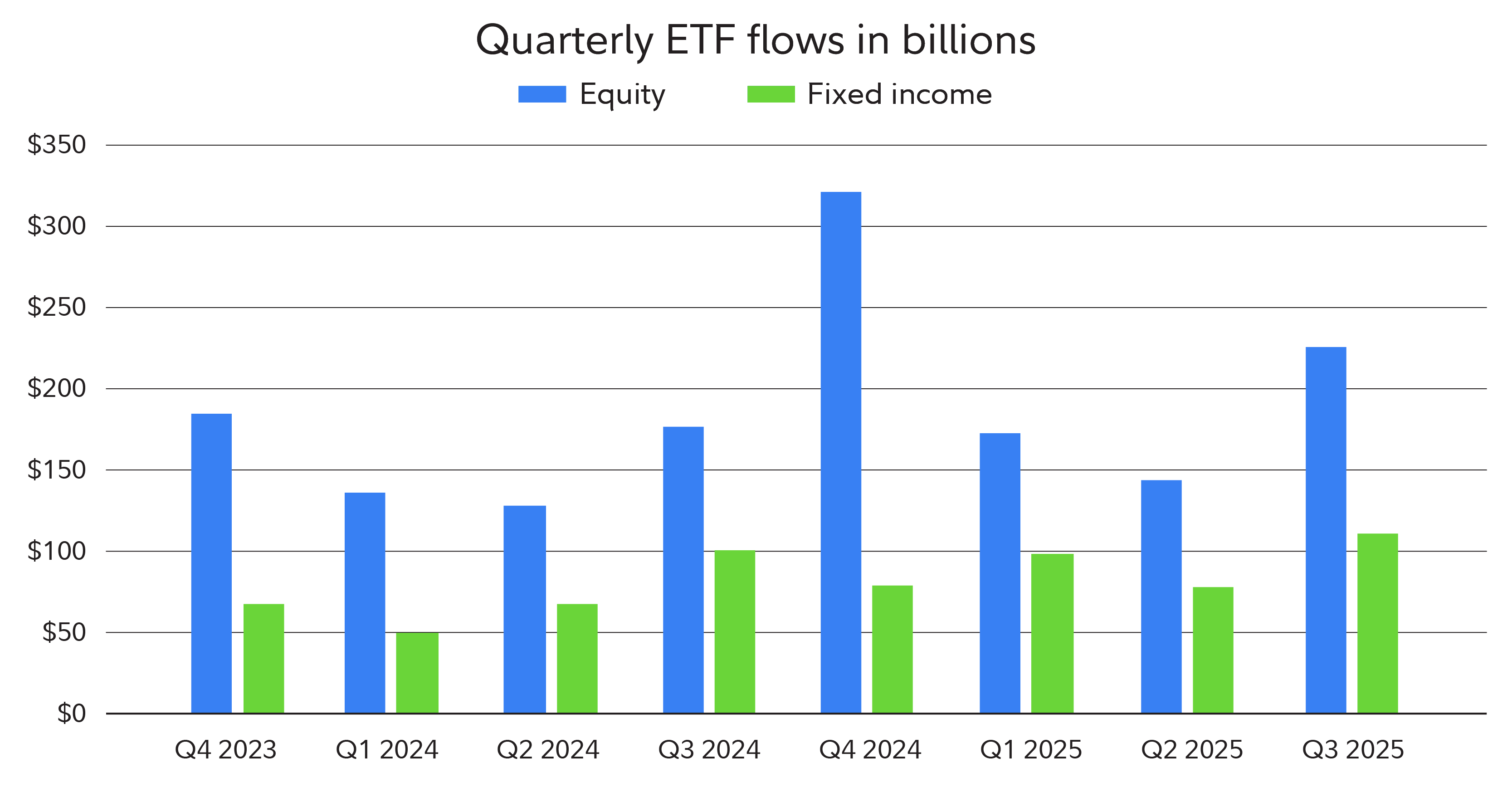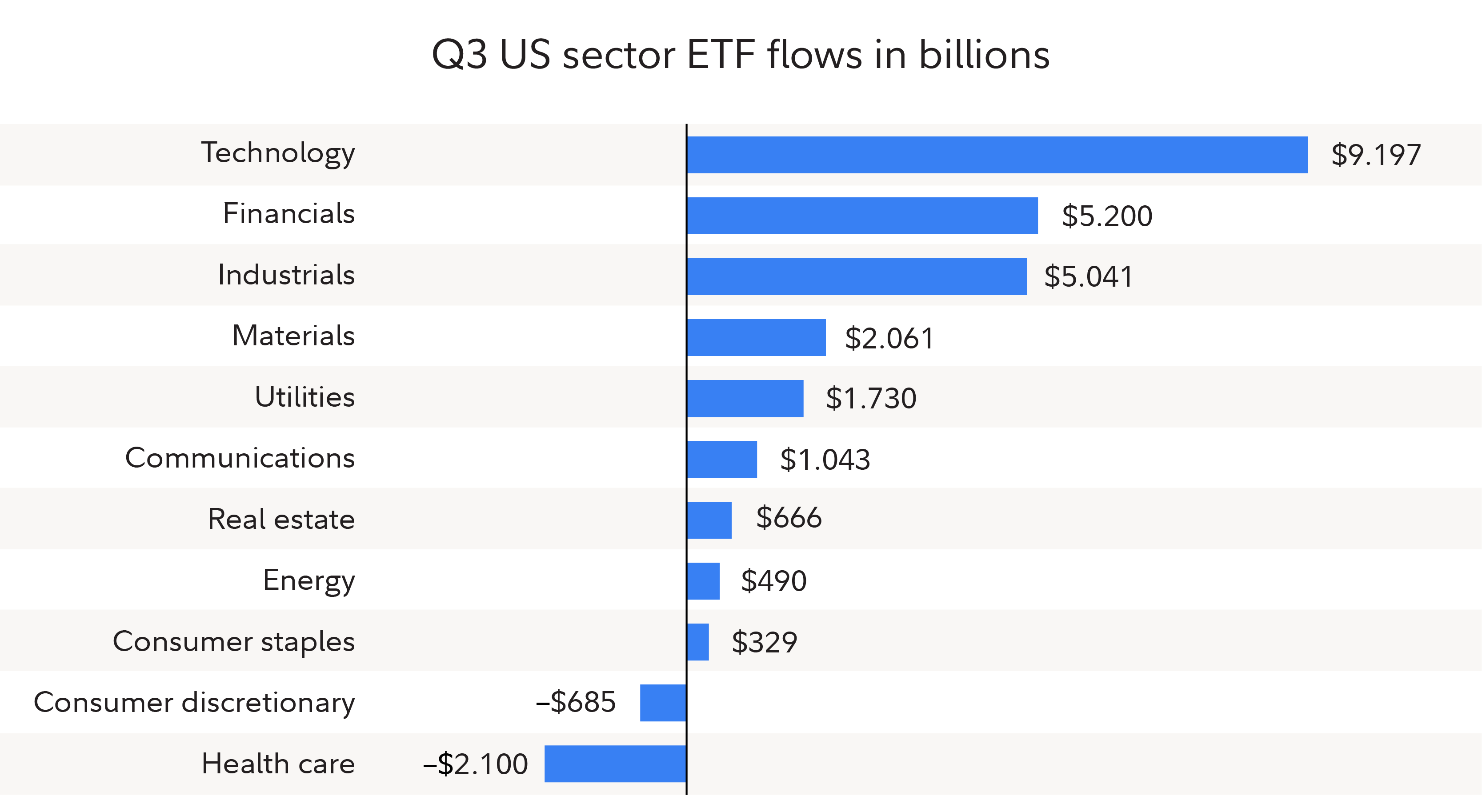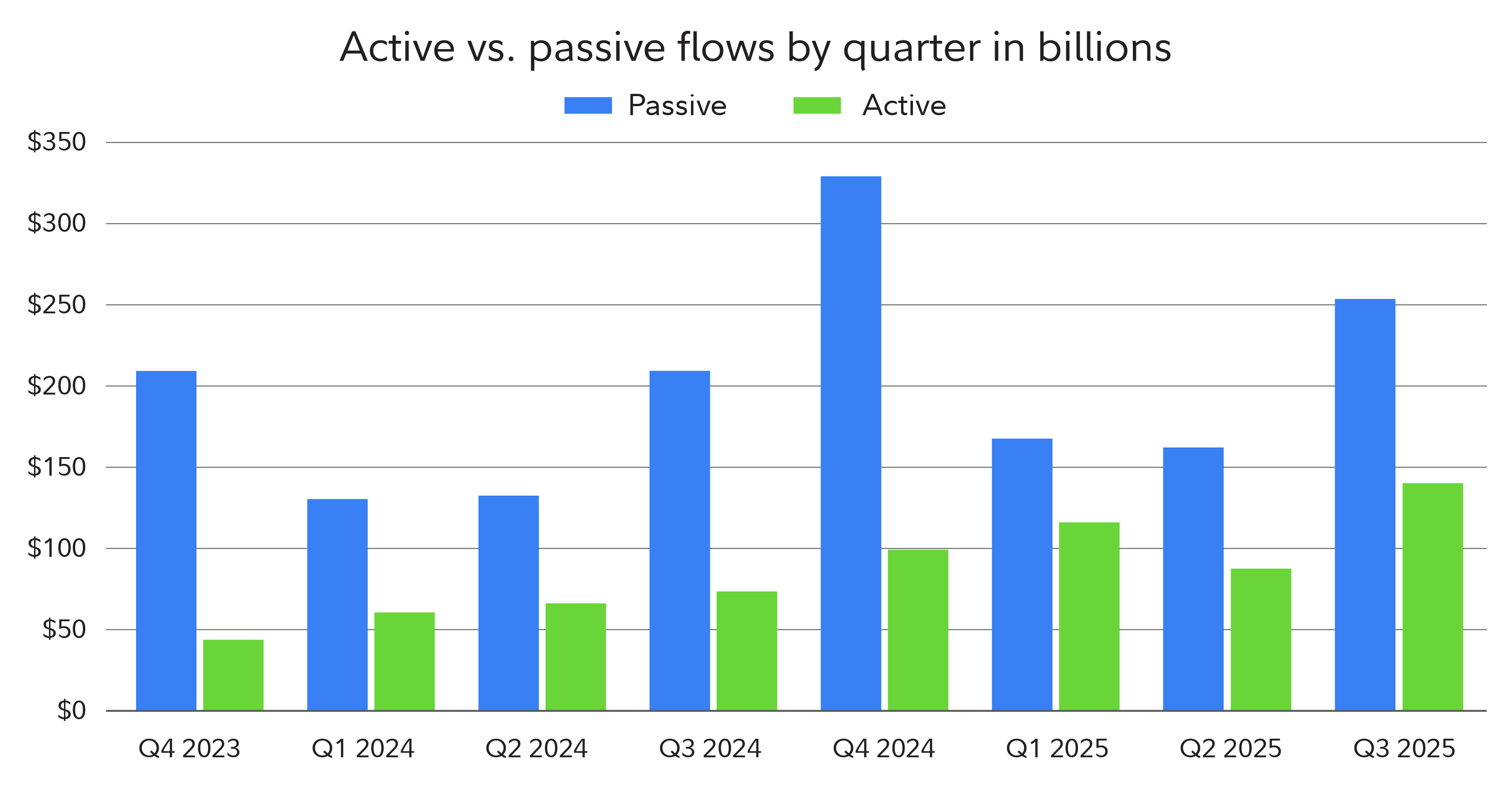US-based ETF fund flows are once again on the precipice of setting a new annual record, as investors continue to gravitate to ETFs to invest in the market. Here are some of the key trends that drove ETF flows over the last 3 months that can help you find where the momentum may be in the market.
Market gains propel ETFs
ETF flows snapped the trend of 2 straight quarterly declines that occurred during Q1 and Q2 of the year. Not only were total ETF flows higher in Q3 than the previous 2 quarters, they surpassed those from the same quarter last year.
During Q3, both equity (e.g., stock) and fixed income (e.g., bond) flows picked up. This could set the stage for momentum into Q4—which has been a big quarter for flows. Indeed, last year’s record-setting Q4 helped propel the full year past $1 trillion in ETF flows.

A major factor driving the demand for equity ETFs in particular was the massive 13% gain for the S&P 500 during Q3. The stock market saw its best Q3 since 2020, which included the strongest September (historically the worst month of the year on average for stocks) since 2010.
This momentum appeared to spill over into fixed income ETF flows as well, which rebounded from their Q2 dip and even surpassed robust Q1 flows. Despite the quarterly and annual uptick in fixed income flows, equity ETF flows have now led for 10 consecutive quarters.
Tech ETF flows lead again
In what has become a reoccurring theme, tech ETF flows led the way among sector-based ETFs. Tech stocks played an outsized role in the S&P 500’s huge Q3 rally, and that was reflected by tech-themed ETFs’ leadership among sector-themed ETFs.
However, tech ETF flow outperformance was less pronounced relative to other sector flows over the summer, as both financial- and industrial-themed ETFs recorded strong flows last quarter. Financial ETFs actually bounced back from outflows during Q2, as did materials and energy ETFs.
Consumer discretionary– and health care–themed sector ETFs saw outflows. Notably, health care ETFs have now experienced several quarterly outflows as that sector continues to underperform the broad market year to date.

Active ETF flows slow again
After the active-passive quarterly gap had narrowed substantially in Q1, Q3 saw actively managed ETFs lose some momentum for the second consecutive quarter. Meanwhile, passively managed ETFs experienced a tidal wave of flows in Q3. In fact, Q3’s passive ETF flows surpassed both the previous 2 quarters as well as the same quarter from a year ago. If recent precedent holds and the trend for big Q4 flows reoccurs, passively managed ETFs could once again set a new record for annual flows.
With that said, actively managed ETFs—which in contrast to passively managed ETFs are not designed to track a benchmark—are on pace for their best yearly flows ever.

Looking for ETFs?
ETF flows can be a useful tool to help identify market trends, and to see where investors are broadly putting their money. If you are interested in investing in ETFs, Fidelity's ETF Screener can quickly sort through a lot of data based on the filtering selections you make.
You can search for ETFs using a variety of characteristics, like the fund's objectives, fundamentals, technicals, performance, volatility, trading characteristics, tax considerations, and analyst ratings.


